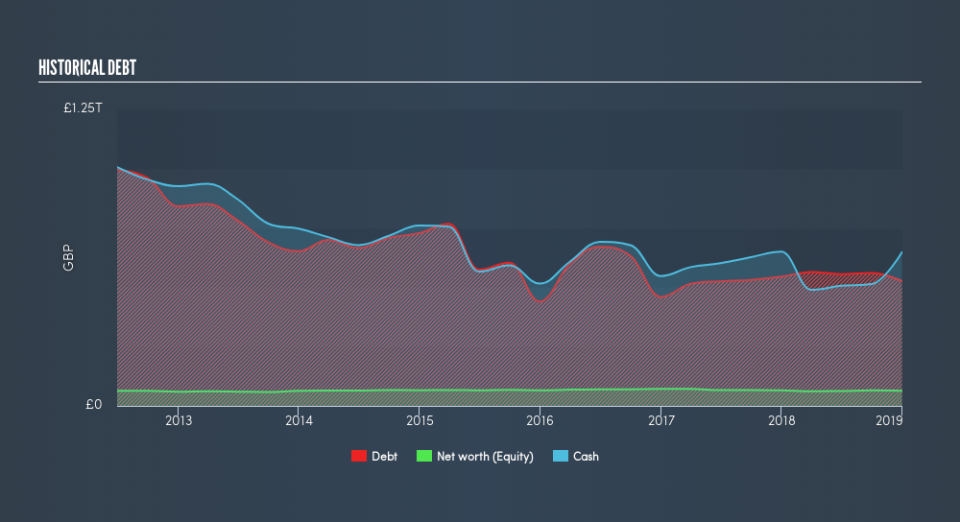Can Barclays PLC (LON:BARC) Survive The Next Financial Crisis?

As a large-cap stock with market capitalization of UK£28b, Barclays PLC (LON:BARC) falls into the category of a major bank. As these large financial institutions revert back to health after the 2008 Financial Crisis, we are seeing an increase in market confidence in these “too-big-to-fail” banking stocks. A set of reforms called Basel III was imposed in order to strengthen regulation, supervision and risk management in the banking sector. The Basel III reforms are aimed at banking regulations to improve financial institutions’ ability to absorb shocks caused by economic stress which could expose banks to vulnerabilities. As a large bank in GBP, BARC is exposed to strict regulation which has focused investor attention on the type and level of risks it is subjected to, and higher scrutiny on its risk-taking behaviour. Investors are viewing BARC with a more cautious lens and analysing these stocks using bank-specific metrics such as liquidity and leverage. Today we’re going to take a look at these metrics to gain more confidence investing in the stock.
See our latest analysis for Barclays
Why Does BARC's Leverage Matter?
Banks with low leverage are exposed to lower risks around their ability to repay debt. A bank’s leverage can be thought of as the amount of assets it holds compared to its own shareholders’ funds. Though banks are required to have a certain level of buffer to meet its capital requirements, Barclays’s leverage level of 17.77x is significantly below the appropriate ceiling of 20x. This means the bank exhibits very strong leverage management and is well-positioned to repay its debtors in the case of any adverse events since it has an appropriately high level of equity relative to the debt it has taken on to remain in business. If the bank needs to firm up its capital cushion, it has ample headroom to increase its debt level without deteriorating its financial position.
How Should We Measure BARC's Liquidity?

Since loans are relatively illiquid, we should know how much of the bank’s total assets are comprised of these loans. Usually, they should not be higher than 70% of total assets, although this should not be a worry for Barclays due to its significantly lower ratio of below 30%. This means less than a third of the bank’s total assets are tied up in the form of illiquid loans, leading to extremely high liquidity, imaginably at the expense of generating interest income.
Does BARC Have Liquidity Mismatch?
Banks operate by lending out its customers’ deposits as loans and charge a higher interest rate. Loans are generally fixed term which means they cannot be readily realized, yet customer deposits on the liability side must be paid on-demand and in short notice. The discrepancy between loan assets and deposit liabilities threatens the bank’s financial position. If an adverse event occurs, it may not be well-placed to repay its depositors immediately. Since Barclays’s loan to deposit ratio of 75% is within the sensible margin, below than the appropriate maximum of 90%, this level positions the bank cautiously in terms of liquidity as it has not disproportionately lent out its deposits and has retained an apt level of deposits.
Next Steps:
Barclays meets all of our liquidity and leverage criteria, exhibiting operational prudency. The operational risk side of a bank is an important fundamental often overlooked by investors. High liquidity and low leverage places the bank in an ideal position to repay financial liabilities in case of adverse headwinds. Today, we've only explored one aspect of Barclays. However, as a potential stock investment, there are many more fundamentals you need to consider. There are three key factors you should further examine:
Future Outlook: What are well-informed industry analysts predicting for BARC’s future growth? Take a look at our free research report of analyst consensus for BARC’s outlook.
Valuation: What is BARC worth today? Has the future growth potential already been factored into the price? The intrinsic value infographic in our free research report helps visualize whether BARC is currently mispriced by the market.
Other High-Performing Stocks: Are there other stocks that provide better prospects with proven track records? Explore our free list of these great stocks here.
We aim to bring you long-term focused research analysis driven by fundamental data. Note that our analysis may not factor in the latest price-sensitive company announcements or qualitative material.
If you spot an error that warrants correction, please contact the editor at editorial-team@simplywallst.com. This article by Simply Wall St is general in nature. It does not constitute a recommendation to buy or sell any stock, and does not take account of your objectives, or your financial situation. Simply Wall St has no position in the stocks mentioned. Thank you for reading.

 Yahoo Finance
Yahoo Finance 
